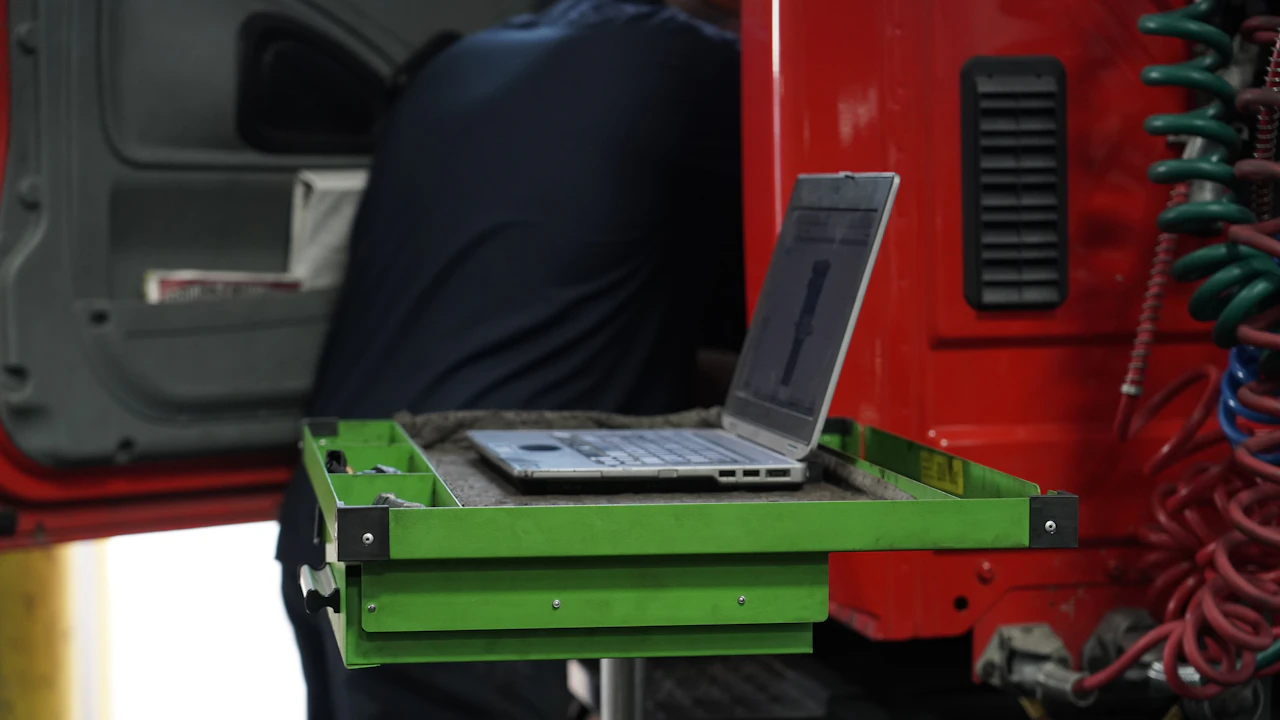Diesel Engine Troubleshooting: What Every Driver and Fleet Manager Should Know

When it comes to diesels, your engine is built to tackle heavy loads, uneven surfaces, long roads, and endless runtime. Diesel engines are powerhouses, there is no question. But even the most reliable engines can develop problems over time. For drivers and fleet operators in South Carolina, knowing the basics of diesel engine troubleshooting isn’t just smart, it’s essential for safety, uptime, and controlling repair costs.
Whether you’re driving along the coast, through the humid summer heat or up mountain grades in the Upstate, South Carolina’s diverse driving conditions have a way of putting unique stress on diesel engines. As a driver, or fleet manager, understanding early warning signs and common failure points can mean the difference between a quick fix in the yard and a costly roadside breakdown.
Why Every Driver Should Understand Basic Troubleshooting
Fun fact about diesels, there are so many systems and components at play that your diesel engine rarely fails without warning. This is especially true when it comes to modern trucks that have advanced ECMs (Engine Control Modules) and sensors. And while the ECM might do a lot of the work, there’s still no substitute for a driver’s eyes, ears, and experience. Recognizing symptoms early helps you:
- Avoid expensive secondary damage
- Prevent roadside emergencies
- Keep DOT inspections clean
- Reduce downtime and lost revenue
Common Diesel Engine Problems and Their Warning Signs
1. Hard Starting or No Start
Possible causes:
- Weak batteries or poor connections
- Faulty glow plugs or intake heaters
- Low fuel pressure or clogged filters
Driver tip:
Listen for the starter’s cranking speed. Keep in mind that slow cranking could indicate battery or starter problems, while fast cranking with no fire might point to fuel delivery issues.
2. Excessive Smoke
Black smoke: Unburned fuel, often caused by a clogged air filter, bad injectors, or turbo issues.
Blue smoke: Burning engine oil from worn piston rings, valve seals, or turbo seals.
White smoke: Unburned fuel due to low compression, faulty injectors, or coolant entering the combustion chamber.
Driver tip: Note when the smoke appears —at idle, under load, or on cold starts— and report it accurately to your shop.
3. Loss of Power
Possible causes:
- Fuel filter restriction
- Turbocharger or boost leaks
- Exhaust after-treatment problems (DPF restriction)
Driver tip: Monitor boost pressure and engine load on your dash gauges. A sudden drop may indicate an air leak or turbo failure.
4. Overheating
Possible causes:
- Low coolant levels or leaks
- Failed fan clutch
- Plugged radiator or charge air cooler
Driver tip: Never remove a hot radiator cap. If you notice temperatures rising, reduce load, idle down, and get safely off the road before major damage occurs.
5. Warning Lights & Fault Codes
Possible causes:
- Emission system faults (EGR, DPF, SCR)
- Sensor failures (temperature, pressure, NOx sensors)
- Fuel system and injector control issues
Driver tip: To make it easier for mechanics to troubleshoot issues, keep a record of fault codes as they appear. Many ECMs will store inactive codes that can help your technician trace intermittent issues.
Basic Troubleshooting Steps for Drivers
1. Perform a Visual Inspection
Check for obvious issues. Things like loose belts, damaged hoses, visible leaks, disconnected wiring, or anything unusual around the engine bay can be an easy indicator for you.
2. Monitor Gauges and Displays
Oil pressure, coolant temperature, boost pressure, and DEF levels are your early warning system.
3. Listen and Feel
Changes in engine sound or vibration patterns can point to injector issues, misfires, or mechanical wear.
4. Document Symptoms
Write down when the issue occurs, what conditions you were driving in, and how long it lasted. This saves valuable time in the shop.
5. Know When to Stop Driving
Some problems, like low oil pressure or rapid coolant loss, can cause catastrophic engine damage in minutes. If in doubt, shut it down.
South Carolina Conditions That Can Affect Diesel Engines
Engines can be fickle. They like just the right conditions to work in perfect conditions. But the reality is, we can’t control the weather. Here’s how South Carolina can impact your diesel.
- Coastal humidity and salt air can accelerate corrosion on electrical connectors and fuel system components.
- High summer heat increases stress on cooling systems and after-treatment regeneration cycles.
- Mountain grades in the Upstate put heavy demand on turbos, exhaust systems, and braking systems.
- Seasonal pollen and dust can clog air filters faster than expected.
Preventive Measures to Reduce Troubleshooting Headaches
- Regular fluid and filter changes, especially fuel filters to protect injectors.
- Cooling system maintenance, flush coolant on schedule and inspect hoses for soft spots or leaks.
- Air intake system checks, replace air filters before they restrict airflow.
- Battery and electrical inspections, clean terminals and check voltage regularly.
- Scheduled diagnostic scans, catch fault codes before they trigger derates or shutdowns.
The Takeaway for Drivers
Diesel engines are built tough, but they’re not invincible. By learning the basics of diesel engine troubleshooting, drivers can catch problems earlier, communicate better with technicians, and keep trucks earning instead of sitting. In South Carolina’s varied and demanding driving environments, proactive troubleshooting is more than a skill, it’s part of professional driving.
